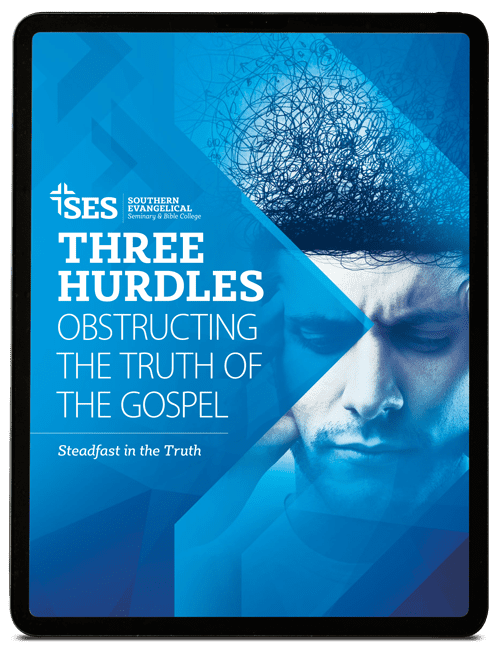[et_pb_section bb_built=”1″][et_pb_row][et_pb_column type=”4_4″][et_pb_text _builder_version=”3.0.67″ background_layout=”light” text_orientation=”left” border_style=”solid”]
After visiting John Calvin’s church in Geneva, I’ve been reflecting on the many results of the Reformation for millions of people around the world, Christian and non-Christian alike. Those effects include, for example, a broad basis of education for all, care for the poor, the sacredness of ordinary work, and translations of the Bible in common languages. Gutenberg’s printing press made the Bible available to those who could read the new translations into German and English aloud to others. Before the Reformation the Bible was only accessible to priests and scholars and illiteracy was very high, 60-95%.¹ The stain glass windows of European cathedrals such as in Reims, Chartres, and the extraordinary Sainte Chappelle in Paris were the Bible for generations of believers. Without the Biblical text in that oral and visual culture the windows taught them the biblical stories pane by pane. After the Reformation increasing public education and greater literacy opened the printed word to the common man.
But in light of today’s media choices and visual culture, is there a decreasing rate of reading and understanding text, especially the Bible? For over ten years I’ve led a Bible study for women in my church. The Bible study attendees include women who come for a variety of reasons, for example, making friends and having God’s help with their troubles. However, I find that many of them have no idea how to read and understand the Bible. I’m often surprised by the shallow understanding of the nature of God and the Bible itself among women of all ages. Some women who have attended Bible studies for years still have little understanding of the Bible or its major themes. This is true even among older residents at a nearby retirement community where my husband and I led a Bible study. I’ve led a variety of studies, but the most fruitful have been studying the Bible inductively.
When considering how to encourage Bible reading, we would do well to review the findings of the Barna study conducted from 2011 to 2016, entitled The Bible in America.² The report cites three major trends which will effect the future engagement of Americans with the Bible: 1) increasing skepticism about “the origins, relevance, and authority of the Scriptures,” 2) a “new moral code,” and 3) “digital access.”³ The good news is that in spite of increasing skepticism about the Bible “two-thirds of all Americans hold an orthodox view of the Bible, that it is the actual or inspired word of God.” Nearly half read the Scriptures at least once a month. More than half of all adults wish they read the Bible more and said reading the Bible is an important part of their “faith journey.”⁴
If Barna’s findings are true, and with the abundance of Christian resources available in America, why do we have such biblical illiteracy? Is it the fault of discipleship methods within the church? Perhaps the lack of teachers? Faulty Bible study methods? Studies which are boring and unexciting, or too demanding? Popular Christian media is often substituted for Bible reading to the detriment of the Christian. There are continually more distractions and competition for time with social media. Unfortunately, replacing Bible reading with popular Christian media can lead one to believe that the author’s words have equal weight with the divinely inspired Word of God; this will plant seeds of rebellion to Biblical authority and revelation. Surely all of these are factors to some degree.
Faulty hermeneutical methods of study can contribute to Biblical illiteracy as well. I have witnessed many ways in which Bible study can “go off the rails” in women’s groups. One woman tried to allegorize every verse, and many readers look first at “what it means to me” without stopping to consider the historical, grammatical, and theological context. There are plenty of “open and point” methods and attempts to find a “verse for life” (as satirized by the Babylon Bee). I know how listening to a teacher’s pre-digested study without my own personal time invested may be enlightening, but leaves me with little understanding of how to find the meaning in the text of scripture; the text itself is forgotten except for the memories and feelings it generated at the time.
I’m so grateful for my studies at SES and how the courses prepared me to be a better Bible study teacher. Courses on the Old and New Testament, hermeneutics, Biblical languages, and classical apologetics among others, equipped me to open the text of scripture and observe with a greater understanding the context historically, grammatically, theologically, and philosophically. When leading Bible studies my friends and I move through the text, inductively observing, asking questions, looking at the structure, and finding what it says about God, who He is, what He has done and continues to do.
Our apologetic must continue to make a case for reading the Bible, for its trustworthiness, and the special revelation of the majesty of God who has spoken and redeemed us by the blood of His Son. Our work must include a toolbox of truths grounding our study in reality, in the nature of God and man, in the primacy of first principles and logic, and in the meaning found in the text of scripture. Then the temptations to follow fideism and self will be hopefully be discarded as shallow answers which hold no weight in our cultural morass.
In addition, we must make sure our apologetic addresses the growing number of Americans who are truly skeptical and even hostile to the Bible. According to Barna, the number of Bible skeptics has grown from ten percent to twenty-two percent of Americans from 2011 to 2016. These numbers surpass the percentage of Americans who are engaged with the Bible (17%). “Bible engaged” means a person who has a high view of Scripture and reads the Bible four or more times a week, versus a “skeptic” who believes the Bible is just another book of teachings written by men.⁵ Even more concerning is the rise in the number of respondents, especially non-Christian millennials, who believe the Bible is “actually harmful and that people who live by its principles are religious extremists.” Seventy-eight percent of the skeptics said they were hostile toward the Bible and believe it “was written to control or manipulate other people.” Only about half (51%) of Americans said that the Bible is a “good influence on society.”⁶
One consequence the rejection of Biblical authority and even of the Bible’s positive influence, is Barna’s second trend, a “new moral code” of “self-fulfillment.”⁷ The rejection of Biblical authority in favor of “self” as the judge of moral goodness is not a new phenomena, but perhaps now more obvious, even in church. Recently my pastor confessed his surprise that the millennial leaders in our church see no reason to stop following secular cultural attitudes towards marriage, sex, and other personal moral choices. For many Americans there seems to be little cognitive dissonance between their belief in the Bible as a guide for life and their choice to ignore its authority.
Barna’s third trend of “digital access” is great for Bible apps, but it also brings an unfiltered avalanche of messages about other faiths, cults, relationships, gender, sexuality, marriage, pornography, etc. These must be discerned to find the good and true. In addition, I wonder if digital access is changing the way we read the Bible. Are we getting only visual glimpses of the Bible as the believers who read the Bible in stained glass generations ago? Bible apps are convenient, but does access to the Bible in different digital formats enable or hinder contact with the text as a whole? Greater access to the Bible in every language is a great gain, but we can lose interaction with the page itself. Handling the pages, marking them, and interacting with chapters or books as a whole on the printed page is of great worth.
So let us celebrate the 500th anniversary of the Protestant Reformation this year and the reformers who translated the Bible into common languages so every man could read the Bible for himself. As we celebrate, let us treasure Scripture and let the washing of word transform our minds as we equip others to use the sword of the Spirit, the Word of God and understand who God is and as a result, who we truly are.
[/et_pb_text][et_pb_divider _builder_version=”3.0.67″ show_divider=”on” color=”#0083ca” divider_style=”solid” divider_position=”top” divider_weight=”5″ hide_on_mobile=”on” saved_tabs=”all” /][et_pb_text _builder_version=”3.0.67″ background_layout=”light” text_orientation=”left” border_style=”solid”]
- Jonathan Hull, What Has Christianity Ever Done for Us? (InterVarsity: Downers Grove, 2005),12.
- https://www.barna.com/product/the-bible-in-america/
- Ibid.
- https://www.barna.com/research/state-bible-2017-top-findings/
- Ibid.
- Ibid.
- Ibid.
[/et_pb_text][/et_pb_column][/et_pb_row][/et_pb_section]






